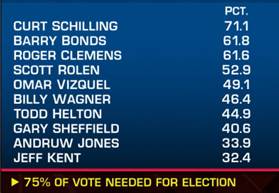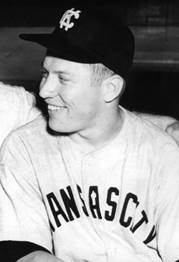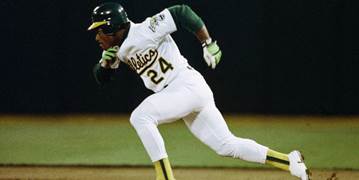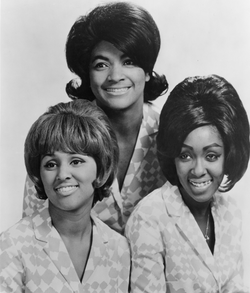Looking for a Christmas gift for a baseball fan? Or trying to nudge someone to give you a cool gift? Maybe a good book.
My suggestion will not surprise you. Joe Posnanski’s The Baseball 100 is currently the hottest-selling baseball book in the country. Based on the reviews I have seen (and my own reading of the book), this is an instant classic to put on your shelf somewhere near the books of Roger Angell and Bill James. Great writing and savvy baseball analysis.

There is a problem. But it’s for a good reason. Joe’s publisher can’t keep up with the demand, and the book is selling out online and at bookstores. Locally, Rainy Day Books in Fairway has some signed copies. I saw the book in the shop at the Negro Leagues Baseball Museum. Barnes and Noble on the Plaza is sold out. After taking the book off the market for a few days, Amazon was able to restock and, for now, say they can deliver before Christmas.
The Rankings: Joe’s rankings were originally published in a series of 100 essays posted at The Athletic from December 18, 2019, to April 13, 2020. His countdown was covered periodically in Hot Stove (#114 to #128). Here is what I wrote after Joe had ranked Mickey Mantle at #11:
“I don’t know about numbers 2-10, but Babe Ruth is surely #1. He was one of the greatest hitters (AND pitchers) of all time, as well as baseball’s biggest celebrity.”
After Ted Williams was picked at #6, I got a note from David Von Drehle, “You give Ted back his war years and I think he’s right there with Babe battling for #1.”
Whoops. Joe had a different take. As he went day-to-day counting down, he surprised many of us when he got to #2 and picked Ruth. That left Willie Mays for the top spot. Joe admits he doesn’t really know who the best player is, but his essay on Willie is quite persuasive.

Joe has said that his picks relied on a mix of stats and subjective factors (and as discussed below, some whimsy). He gave strong consideration to WAR, multi-dimensional talent, the player’s era and certain bonus values (postseason performance, sportsmanship, impact on the game as a whole, years lost to war, etc.).
Sounds like a mix of art, science and gut. We will all have some differences on the rankings. That’s the nature of the beast, especially trying to compare players from different eras. There has also been a major evolution of opinions on what stats best measure performance. That’s part of the fun and gives us something to talk (argue) about while MLB is in lockout mode.
The book version of the essays was released on September 28 this year. A day later, Joe was in Kansas City at a Rainy Day Books event where he was interviewed by Bill James (below). James published a “100 Greatest Players” list in 2001, and he had Ruth at #1 and Mays at #3. Click here for the audio of their conversation that night.

Now let’s look at some lists inside the rankings. If anyone picks up any errors in my lists, please let me know.
Hall of Fame Status: Of the 100 on Joe’s list, 85 are in the Hall of Fame. The other 15 are not in because of…
Gambling (1): Pete Rose (60)
Jerk (1): Curt Schilling (88)
Steroids (2): Barry Bonds (3) and Roger Clemens (13)
First year on the ballot (1): Alex Rodriguez (16)
Retired, but not yet eligible (3): Adrian Beltre (52; eligible 2024); Carlos Beltran (98; 2023) and Ichiro Suzuki (100; 2025).
Current players (6): Albert Pujols (23), Mike Trout (27), Justin Verlander (75), Miguel Cabrera (77), Clayton Kershaw (78), and Max Scherzer (90).
Player in Japanese baseball (1): Sadaharu Oh (85)
The Hall of Fame will not place Pete Rose on a ballot unless MLB withdraws his “permanent” ban for gambling. There is thought that the ban will disappear when Rose dies, permitting him to finally get his plaque in the HOF.
Schilling, Bonds and Clemens are in their 10th (final) year on the baseball writers’ ballot. Alex Rodriquez will be on the ballot for the first time, but his one-year suspension for steroid use will likely keep him out for now. The voting results for this year’s ballot will be announced on January 25. Last year’s results:

Negro League Players: Among Joe’s picks, 14 played in the Negro Leagues. Three of the top five.
Willie Mays (1), Hank Aaron (4), Oscar Charleston (5), Satchel Paige (10), Josh Gibson (15), Pop Lloyd (25), Jackie Robinson (42), Buck Leonard (53), Smoky Joe Williams (62), Ernie Banks (65), Monte Irvin (69), Cool Papa Bell (84), Bullet Rogan (92) and Roy Campanella (94).
Below, Hank Aaron with the Indianapolis Clowns in 1951 (age 17).

Kansas City Connections: There are many players on the list with Kansas City connections. Some for many years, others for a cup of coffee.
Kansas City Monarchs: Satchel Paige (10), Jackie Robinson (42), Ernie Banks (65) and Bullet Rogan (92).
Kansas City Blues: Mickey Mantle (11), photo below in his Blues uniform, and Johnny Mize (64).

Kansas City A’s: Reggie Jackson (59).
Kansas City Royals: George Brett (35), Gaylord Perry (68) and Carlos Beltran (98).
Kid Nichols (82) played pro ball in Kansas City before going to Boston in the NL in 1890.
Albert Pujols (23) played high school and college ball in the KC area.
Whimsy Rankings: Joe could not resist matching some rankings with a number identified with a player, so long as the number was within the arc of where they would be on the list. A good example is Jackie Robinson at #42. Too high? Too low? Just right. Jackie’s uniform number is so sacred that it has been retired by all MLB teams.
Joe DiMaggio at #56. Maybe should be higher. But I’ll never forget where he is in The Baseball 100 – a match for his hitting streak in 1941.
Gary Carter is #86 for his role with the 1986 Mets.
Frank Robinson and Mike Schmidt probably fit well at #20, and that was their uniform number. Plus it gave Joe a chance to put them in a tie for #20 and omit #19, a number reminiscent of the 1919 Black Sox.
There are several other uniform number slots, including Rickey Henderson who might be ranked anywhere from #20 to #30 depending on what stats are considered most important. So why not #24, his uniform number? My friend David Matson has finished the book and says the Henderson essay is his favorite, specifically noting a piece of music trivia. Rickey Nelson Henderson is named after Ricky (without an “e”) Nelson, son of Ozzie and Harriett. Henderson was born on December 25, 1958, when Ricky Nelson was in the midst of a string or rock ‘n’ roll hits.

I like whimsy.
Joe Posnanski Now: Joe has moved on from The Athletic and now has his own subscription blog. Worth every penny. Check it out here.
Buck, Chiefs and Biden: Joe Posnanski’s good friend Buck O’Neil was voted into the Hall of Fame on Sunday, December 5 (full report in Hot Stove #179). The announcement on Buck came out about 5:30, and the Chiefs took the field (GEHA) at Arrowhead later that night for Sunday Night Football. The Chiefs took note of Buck’s HOF election on the jumbotron:

Three days later, President Joe Biden was in Kansas City for a speech on his infrastructure package. The President’s speech included a salute to Buck O’Neil, the famous “American Monarch” who had just been elected to the Hall of Fame (video clip here).
MLB Lockout: The Collective Bargaining Agreement has expired, and the owners have locked out the players. Rather than talk about that, I’m going to play some music.
Lonnie’s Jukebox – R & B High School (Pem-Day): Two weeks ago, the New Yorker ran an excellent article about Pembroke-Country Day School, an all-boys private school in Kansas City (later to be merged into a coed school now known as Pembroke Hill). The author, 1973 Pem-Day graduate David Owen, tells the story of how primarily white senior classes from the 1960s booked rhythm and blues acts to play at their proms. Owen also adds context related to race and segregation in music and schools in those times. Click here for the article, but you may hit a paywall.
The lineup of R&B artists makes for some fine selections for Lonnie’s Jukebox. Click on the song titles to listen.

1962 – Bo Diddley: In 1962, the senior-class president was Arthur Benson, a KC lawyer and Hot Stove subscriber. He told the New Yorker, “Several ideas for the end-of-the-year celebration had been floating around, but we weren’t happy with any of them.” But a friend of Arthur’s knew a student at another high school who had connections in the music business. They followed up and were able to book Bo Diddley.
After the New Yorker article was published, there was a frenzy of emails among former Pem-Day students, including several Hot Stove subscribers who looped me into some of the conversations (I’m Van Horn, not Pem-Day). In this process, I picked up some more info, including the identity of the student at the other high school who helped book Bo Diddley. Sandy McGee, Pem-Day class of ’62, says it was his friend Larry Levy from Southwest High School. I didn’t know Larry back then, but in a typical small-world-of-KC story, Larry’s wife Marti and my wife Rita are yoga/lunch pals.
Prom night at the Kansas City Country Club was a big success. Arthur Benson in the New Yorker: “Everyone was having such a great time that at the end I asked Bo Diddley if he’d be willing to keep playing, and he said that for fifty bucks they would play one more song. That one final song lasted about twenty minutes non-stop. We were all just dancing our heads off, and when it was over we were exhausted. We stood there on the porch cheering…”
Below, Bo Diddley at Pem-Day. He no doubt played many songs from his eponymous 1958 album Bo Diddley. For Lonnie’s Jukebox today, let’s go with…

1964 – The Drifters and The Crystals: There were two Pem-Day dances with R&B acts in 1964. Senior-class president Bill Schultz worked through Allan Bell who had recently opened a talent agency. For the spring dance, Bell booked the Drifters who came as a package with the Georgia Soul Twisters. The fieldhouse was packed and the event was profitable because tickets were also sold to the public. Many of the non-student ticket holders were Black. Schultz: “The headmaster was livid, just livid. But then we doubled down.” He was referring to the upcoming prom to be held at the Kansas City Country Club.
Below from the 1964 yearbook, the Drifters on stage with the Georgia Soul Twisters. The Drifters had been recording hits since 1959. Their two most recent top-ten hits before the Pem-Day dance were…
“Up On the Roof” and “On Broadway”

The profits from the spring dance were carried over to the prom. Allan Bell again was the booker, and he brought in the Crystals, Dr. Feelgood and the Interns, and Brian Hyland (a white guy who sang “Itsy Bitsy Teenie Weenie Yellow Polka Dot Bikini”). The Crystals were credited with a #1 hit in 1962 – “He’s A Rebel.” I say “credited” because they did not sing the recorded version that went to #1. More on that in the Darlene Love trivia below.
The Crystals had two top-ten hits in 1963 that I’m sure were sung that night…
“Da Doo Ron Ron” and “Then He Kissed Me”
In the photo below, the Crystals perform at Pem-Day. Irv Blond (Pem-Day ’63) tells me that the student with the black-rimmed glasses is George Myers whose love of the blues genre turned into a career. In 1985, Myers and Roger Naber opened the Grand Emporium at 3832 Main Street. The club gained a national reputation for live blues music (some years named “Best Blues Club in America”). The full calendar of live music also included local bands and other genres. The Grand Emporium was open from 1985 to 2004 and hosted some 7,400 shows.
While the Crystals were performing at the prom, several students (including George Myers) danced with the singers. As recounted by a former student in the New Yorker, “The club was horrified.” It was the last Pem-Day prom held at the Kansas City Country Club.

1965 – Booker T. & the MG’s: An interracial group that was the house band at Stax Records. Biggest hit was this #3 from 1962…
1968 – Ike and Tina Turner with the Ikettes: I already knew about this Pem-Day event. In Hot Stove #167, Tina Turner was featured in Lonnie’s Jukebox. This prompted a response from Hot Stove subscriber Hank Jonas, a member of the Pem-Day class of 1968. He told me that Ike and Tina had played at their prom, and he sent me a copy of the ticket:

Hank was one of the students pushing for Ike and Tina, and he described their arrival, “Ike came on with the band, and they started playing, and then the Ikettes came out, and a strobe light went on. Tina was wearing a leopard-print miniskirt with an ankle bracelet and no shoes. We all just stood there. We didn’t know what to do. It was amazing. It was phenomenal.”
The president of that 1968 Pem-Day class was Bill Quirk (who 41 years later would become one of my law partners at Polsinelli when we merged with Shughart, Thomson and Kilroy). Bill had a moment of tension that night when it came time to pay the band during their intermission. A check for $1,200 had been written on the class account, but Ike insisted the deal was for a certified check. He threatened to not play the second set. Quirk to the New Yorker: “I didn’t know what to do, but my father was there, and we kind of negotiated. We had maybe three hundred or four hundred dollars in cash from ticket sales at the door, so we gave them that and my father wrote a check for the difference.” The principal assured Ike the check was good, and the band returned to the stage.
Although the yearbook has photos of the prom, there are none of the Ike and Tina show. One source believes the administration thought the Ikettes weren’t wearing enough clothes to be shown in a school publication.
This was before Ike and Tina hit it big with “Proud Mary,” but the year before their appearance at Pem-Day, they released one of their classics…
“River Deep-Mountain High” (This link is to a live show from 1966, close to what the class of 1968 must have seen)
1969 – Arthur Conley: This name may not be as familiar, but you will recognize his big song that peaked at #2 in 1967…
The New Yorker article listed Bob Kuban and the In-Men for 1967. The class of 1963 was not covered, so I checked with Irv Blond who graduated that year. It took a caucus with other members of the class (Lee Nigro, Randy Leathers and Strat Overton), and their collective memory settled on Ben Sharp and the Sharpees, a well-known regional band out of St. Louis. Ike Turner had also been based in St. Louis and members of the two bands moved back and forth.
Darlene Love: That’s the end of the Pem-Day story, but it leads to some good trivia about Darlene Love. In 1962, producer Phil Spector was trying to be the first to distribute a recording of “He’s A Rebel.” He wanted his top act, the Crystals, but they were on tour. So he enlisted the Blossoms to do the recording. The Crystals were a bigger name, so he credited the record to them. It went to #1. The lead singer of the Blossoms was Darlene Love whose singing career landed her in the Rock and Roll Hall of Fame.
“He’s A Rebel” by the Blossoms (credited to the Crystals). Below, the Blossoms with Darlene Love at lower left.

Darlene Love is well known for her annual performances of “Christmas (Baby Please Come Home),” initially on David Letterman and then the ABC morning show. The song is a track on the famous 1963 album produced by Phil Spector, A Christmas Gift For You.
“Christmas (Baby Please Come Home)”
Happy Holidays from Rita and Lonnie! Photo from our condo at sunrise with the Plaza Lights aglow…
